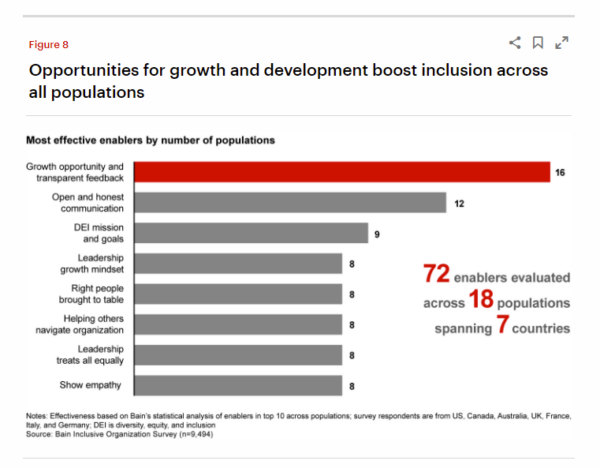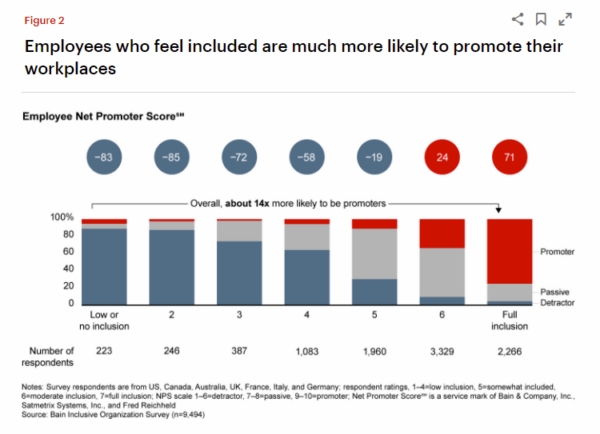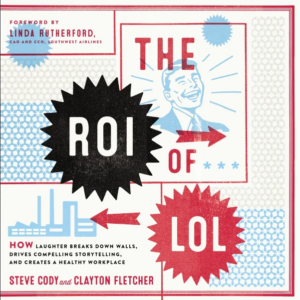Research-backed ways to foster inclusion in your workplace
A new survey from Bain & Company breaks down what matters to different employees in how they feel included at work.

The average worker will spend 13 years and two months of their lifetime at work.
That’s why many people place a premium on feeling included at the place they choose to spend their working hours — to feel like they belong.
And while it’s easy for organizations to say they strive to build an inclusive work environment, it’s become evident over the past several years that lip service about valuing employees isn’t enough for a workforce that is more transient than ever.
Inclusion vs. diversity
Inclusion is often neatly packaged alongside diversity and equity in organizational commitments to building a better workplace. Following the murder of George Floyd and the ensuing civil unrest, Americans began demanding more from employers on overdue commitments and workplace transformation, such as racial and ethnic diversity in hiring and promotions.
But where promises to increase diversity are easily measured — commit to hiring X number of employees with diverse racial and ethnic backgrounds — inclusion is more difficult to quantify.
Yet inclusion is the more important ingredient in creating meaningful change within organizations.
Shelley Willingham, vice president of The Diversity Movement, explained in comments to PR Daily: “I think there are a lot of disconnects in the way that companies are wanting to show that this is a priority…They’re doing some things out of order.”
What defines inclusive organizations?
Bain & Company surveyed 10,000 people across a wide spectrum of industries, seniority levels and demographic backgrounds to identify what makes a workplace “inclusive.”
Unsurprisingly, diversity is part of the equation. The survey found that people describe inclusive organizations as “diverse places where people are heard, valued and supported.”
When asked what inclusion feels like, employees across all demographics say it is being treated with dignity, able to bring their authentic selves to work, able to contribute, and feeling connected to others—which is our definition of inclusion.
How to build — and maintain — an inclusive workplace
The report lists behavioral and systemic “enablers” that, when executed, result in most groups feeling included. These enablers include peer and leadership mindsets, structures and purpose, strategy and aspiration.
Luckily, there is one tactic that the survey found boosts feelings of inclusion among all demographic groups: opportunities for professional development.

Professional advancement opportunities were found to be the most effective enablers of inclusion, followed by open and honest communication and an organization’s DE&I mission and goals.
The report suggests prioritizing professional development and career coaching and developing mentorship programs to help employees get their footing within an organization.
Why inclusion matters
Inclusion is a key ingredient for holding onto workers during “The Great Resignation.” And employees who feel they belong are more likely to perform their best work.
According to the survey, around 65% of people across all demographics see an inclusive environment as “very important” during the job hunt. Employees who feel “fully included” are more likely to feel comfortable innovating and challenging the company’s status quo than those who don’t feel fully included.
It’s also essential for building your reputation as an employer. Employees who feel included in their workplaces are much more likely to share their positive thoughts about their company.

Does your DE&I commitment include a meaningful inclusion strategy, or are you simply relying on diversity to carry your workplace improvement promises?







